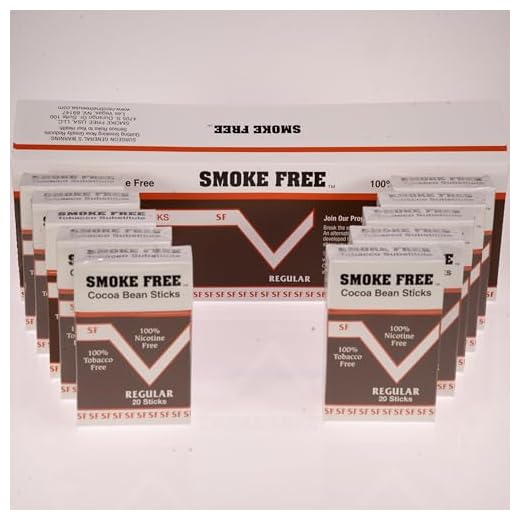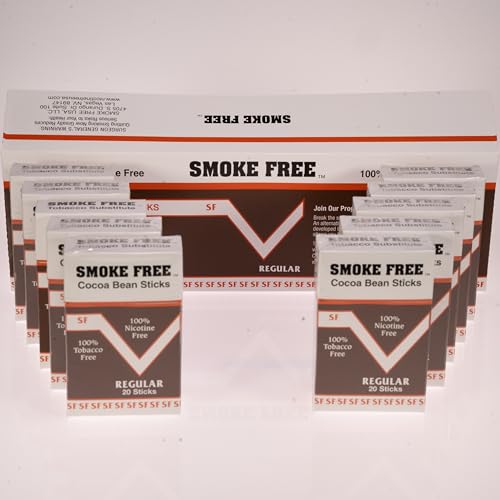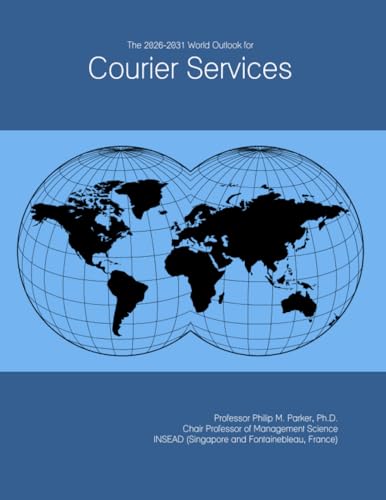




Immediate recommendation: pack cigarettes, cigars, smokeless nicotine pouches and vaping devices in your carry-on when allowed, keep original sealed packaging and receipts, and declare quantities that exceed the destination’s personal allowance at arrival. Keep devices and e-liquids accessible for inspection; do not attempt to use any smoking items on board.
Typical duty-free allowances: many destinations set per-person limits for imports from outside their customs area. Common examples used by airlines and border agencies are 200 cigarettes / 100 cigarillos / 50 cigars / 250 g smoking leaf equivalents for travelers arriving from outside the region. Other countries apply different figures (some use 200–400 cigarettes or an equivalent weight of loose product). Verify the exact number for your destination on the official customs website before departure.
Vape and battery rules: carry electronic nicotine devices only in the cabin; spare lithium-ion cells must remain in carry-on with terminals protected (tape or battery cases). E-liquids are treated as liquids for security screening – bottles must be 100 ml (3.4 oz) or smaller and fit inside a single clear resealable bag. Do not pack e-cigarette devices or filled tanks in checked baggage; many carriers prohibit that.
Prohibitions and penalties: several countries restrict or forbid import of any smoking products or specific formats (chewing/smokeless in some Asian jurisdictions, for example); penalties range from seizure and fines to prosecution. If you exceed the declared allowance, expect tax assessment or confiscation. Keep a printed copy of purchase receipts and the product’s original packaging to speed up inspections.
Pre-flight checklist: confirm the airline’s cabin policy for lighters and vaping devices, check the destination’s age threshold for possession, note limits on quantity and value, and plan to present items at customs if required. When in doubt, declare the items on arrival – non-declaration usually leads to greater delays and stiffer penalties.
Rules for smoking products in carry-on bags
Keep cigarettes, cigars, smokeless nicotine and vaping kits within the destination’s duty-free or personal allowance, stored in original packaging with invoices; if totals exceed allowance, declare them at arrival.
Quantities and declaration
Example allowances (arrivals from outside the EU): 200 cigarettes or 100 cigarillos or 50 cigars or 250 g smoking blend. Many countries apply similar caps or expect evidence of personal use; check the customs website of the country you are arriving to for exact figures and age restrictions. Failure to declare amounts above the allowance typically results in seizure, fines or duty assessments.
Vapes, e-liquids and batteries
Store electronic nicotine devices and spare lithium batteries in carry-on aircraft bags only; never pack spare lithium cells in checked baggage. E-liquids must follow the 100 ml container rule for liquids in the cabin and be placed in a clear resealable security bag if carried through security. Devices must remain switched off during the flight and may be banned for use onboard.
Practical checklist: receipts and original packaging; confirm destination’s allowance; declare extras on arrival; keep spare batteries insulated; follow airline and airport security rules before departure.
Airline and airport carry-on rules for cigarettes, cigars and loose smoking leaf
Store cigarettes, cigars and loose smoking leaf in original, sealed packaging and keep purchase receipts; expect customs declaration and duties if amounts exceed the destination’s personal allowance.
Screening, limits and documentation
Security X‑ray rarely blocks sealed packs, but loose leaf or unwrapped product may be subject to manual inspection and scent detection. European Union guidance for arrivals from non-EU countries is frequently used as a reference: up to 200 cigarettes, 100 cigarillos, 50 cigars or 250 g of smoking leaf are treated as personal use–quantities above those typically trigger duty and declaration. Duty-free purchases should remain in tamper-evident bags with the sales receipt for transfer flights; liquids for vaping follow the 100 ml/container rule in cabin bags unless sold post‑security in a sealed bag.
Electronic devices and batteries
Electronic smoking devices must travel in cabin baggage only; do not pack powered devices or spare lithium batteries in checked baggage. Spare lithium-ion cells must have exposed terminals taped or be in original packaging. General watt-hour guidance: up to 100 Wh allowed without airline approval, 100–160 Wh requires airline approval, over 160 Wh is usually prohibited. Use of any smoking device onboard is prohibited and will result in penalties.
Airlines and airports set their own rules and some countries ban import or use of vape products (Singapore is a well-known example); verify airline policy and destination regulations before departure. For an unrelated pet first-aid reference, see how to clean a cat wound at home.
Security screening: what smoking items may be inspected or confiscated
Store smoking products in original, sealed packaging and place e-liquids and devices where security staff can remove them quickly; this cuts the chance of confiscation during screening.
Key operational rules: liquids in cabin follow the 100 ml per container limit and must fit in a single transparent resealable bag; sealed duty-free liquid purchases may pass if kept in a tamper-evident bag with purchase receipt. E-cigarette devices and refill containers must be carried in the cabin, switched off, and not used onboard. Spare lithium batteries and powerbanks must be carried in the cabin with terminals insulated; packs over 100 Wh require airline approval and units over 160 Wh are generally prohibited from both cabin and checked stowage. Open flames (torch lighters, butane refills) are frequently prohibited; disposable lighters and one book of safety matches are allowed by some operators but may be banned by destination rules.
| Item | Typical screening action | Common restriction / recommended step |
|---|---|---|
| Cigarette packs | Visual inspection; X‑ray; customs check if quantities exceed duty allowance | Keep factory seals; carry receipts for bulk purchases; declare amounts above duty-free limits at arrival. |
| Cigars & cigarillos | Inspected for authenticity and illegal imports; large volumes flagged for customs | Store in original boxes; expect sampling or seizure if import prohibited at destination. |
| Loose smoking leaf / rolling material | X‑ray and manual inspection; plant material may trigger agricultural quarantine | Pack small personal amounts; check destination phytosanitary rules to avoid confiscation. |
| Snus / nicotine pouches / chewing products | Customs inspection; potential seizure where imports prohibited | Verify legal status per destination (examples of strict countries: Australia, Singapore, UAE); keep original packaging and invoices. |
| E-cigarettes / vaporizers (devices) | X‑ray and manual check; if found in checked stowage, likely removed or confiscated | Carry in cabin, power off, remove batteries if required; do not use during flight. |
| E-liquids / refills | Liquid security limits apply; larger containers may be confiscated at checkpoint unless tamper-evident duty-free | Limit containers to 100 ml each in a single clear bag; keep duty-free receipts and sealed bag for proof. |
| Lithium batteries & powerbanks | May be checked visually or X‑rayed; improperly protected batteries flagged and removed | Each battery ≤100 Wh OK in cabin; 100–160 Wh require airline approval; tape terminals and place in individual plastic sleeves. |
| Lighters & matches | Often removed at security or allowed with restrictions; torch/jet lighters usually confiscated | Carry only disposable safety lighters or one book of safety matches on person where permitted; avoid fuel refills in checked baggage. |
| Smoking accessories (pipes, hookah parts, cigars cutters) | Subject to inspection for residues or prohibited substances | Clean thoroughly; pack separately for easy inspection and show receipts if recently purchased. |
Check airline rules and destination import laws before travel and declare quantities that exceed duty-free allowances at arrival to avoid fines or seizure.
Customs allowances and duty rules: how much smoking products you may transport across borders
Declare all smoking products on arrival forms and keep receipts; exceeding personal allowances usually results in duty, VAT, fines or seizure.
Primary determinants: point of origin (within a customs union vs third country), traveller age (minimum varies by jurisdiction), and whether quantities indicate commercial intent. Small quantities for personal consumption are generally exempt up to fixed limits; larger amounts require declaration and payment of duties.
Representative duty-free thresholds (examples – verify with destination authority before travel): EU (arriving from non-EU): 200 cigarettes or 100 cigarillos or 50 cigars or 250 g loose smoking product. Great Britain (arriving from outside the UK): commonly the same numeric limits; Northern Ireland often follows EU rules for goods from EU. United States: standard personal exemption commonly accepted as 200 cigarettes (one carton) and 100 cigars; quantities above must be declared and duties/taxes paid, plus any applicable state duties. Canada: typical returning-resident allowances after a 48‑hour absence include 200 cigarettes, 50 cigars and 200 g manufactured smoking product (longer absences may allow higher limits). Australia: very low duty-free allowance (commonly 25 cigarettes or 25 g equivalent of other smoked products); excess is assessed and taxed on arrival. Japan: usual exemption about 200 cigarettes or 250 g equivalent.
If quantities exceed the local exemption: select the declaration channel on arrival, present products and receipts, expect an assessment of duty and national sales tax; failure to declare amplifies penalties. Different rules apply for duty-free purchases at airports and for goods transiting through third countries.
Packing and documentation advice: keep items in original, sealed packaging where possible; separate excess quantities for inspection; carry clear proof of purchase or tax-paid receipts; know the minimum legal age at destination. Prior to departure consult the official customs site of your destination for precise numeric limits, duty rates and declaration procedures.
Packing tips to reduce odor, leakage and screening delays
Store cigarettes, cigars and loose leaf in vacuum-sealed pouches or rigid metal tins with a silicone gasket; add an activated-charcoal sachet inside the container and place that container near the top of your carry-on for faster inspection.
Use vacuum bags sized 6×8″ or 8×10″ for single-trip quantities – these remove air, reduce smell escape and compress contents without crushing cigars. For cigars, use a travel humidor tube or a small Boveda 69% pack inside a rigid tube to keep 65–70% RH; for pre-rolled cigarettes include a 1–2 g silica gel packet to prevent moisture migration.
Seal loose leaf in heat-sealed mylar pouches or double-bag with thick freezer-grade zip locks. Add one small activated-carbon pouch per 50 g (or per 2–3 packs) to absorb odors; tea bags or coffee grounds are much less reliable. Wrap metal tins in a layer of clothing only after the tin is fully sealed to avoid dents that can break seals.
Prevent liquid leaks (e.g., nicotine liquids, humidifier fluid) by transferring into leak-proof PET bottles with PTFE tape on the threads, capping tightly, then placing the bottle upright inside a labeled resealable bag. Limit each bottle to sizes you will use in-flight to reduce spill volume if a cap fails.
To shorten security checks, consolidate all smoking-related items into a single clear resealable pouch and keep receipts or purchase documentation on top. Do not bury items deep in a packed case; instead place the pouch in an easily opened compartment so an officer can view contents without unpacking other gear.
Avoid opaque soft pouches that collapse under x‑ray – rigid tins or hard containers create a consistent x‑ray profile and reduce manual inspection rates. Consider a small hard-shell organizer or dedicated padded case for fragile humidors; for robust external carrying solutions see best residential backpack leaf blower.
Quick checklist: vacuum-seal or gasketed tin, activated-charcoal sachet, silica gel (for dryness) or Boveda (for humidity), double-bag liquids with PTFE tape, single clear pouch for screening, rigid container to avoid crushing.
E-cigarettes, vaping liquids and spare batteries: what to pack in cabin baggage
Keep all devices, spare lithium batteries and e-liquid containers in cabin baggage; do not place them in checked bags.
- Batteries – watt-hour limits: lithium-ion cells/packs up to 100 Wh allowed without airline approval; between 100 Wh and 160 Wh require airline approval; over 160 Wh prohibited from passenger carriage. Treat power banks as spare batteries.
- Count limits: most carriers permit multiple batteries under 100 Wh. For 100–160 Wh units airlines commonly allow a maximum of two per passenger after approval – verify the specific carrier before travel.
- Wh calculation: Wh = (mAh × V) / 1000. Use 3.7 V as nominal cell voltage when converting mAh ratings. Example: 20,000 mAh ≈ 74 Wh; 30,000 mAh ≈ 111 Wh.
- Terminal protection: pack spare cells/power banks in original packaging or individual plastic cases; cover exposed terminals with tape or use terminal caps to prevent short circuits.
- Device state: power devices off and secure fire buttons (use a travel case). Do not allow devices to sit with liquid tanks pressurised; remove tanks or empty them if possible.
- Liquids rule: individual e-liquid bottles must follow standard liquids screening: containers no larger than 100 ml and all containers must fit inside a single transparent resealable bag of up to 1 litre capacity for security inspection.
- Nicotine regulations: some destinations restrict nicotine-containing fluids or limit concentration/volume – check destination rules and airline policy for prohibited formulations prior to packing.
- Leak prevention: seal bottle caps with tape or heat-shrink sleeves, place bottles upright inside a waterproof zip bag, and add an absorbent pad between liquid bags and electronics.
- Charging onboard: many carriers forbid charging removable batteries or power banks in-seat; avoid mid-flight charging unless airline explicitly permits it.
- Documentation and declaration: if your device or battery capacity exceeds 100 Wh, obtain written airline approval and carry proof (manufacturer label, battery spec or purchase receipt) for screening staff.
- Pack devices in a padded, easily accessible compartment for security inspection; keep spare batteries in a separate zippered case.
- Label power banks with their Wh rating if printed; if only mAh is shown, include a small note showing the Wh conversion.
- If transporting multiple small e-liquid bottles, consolidate into 100 ml containers and use leakproof inner bags to avoid spillage into electronics.
- Choose a backpack with dedicated pockets and padding for electronics and batteries – for an example of a protective travel pack see best briggs and riley backpack.
Check both the airline’s specific battery policy and the departure/arrival airport rules before travel; when in doubt, declare large-capacity batteries at check-in rather than concealing them in checked bags.







